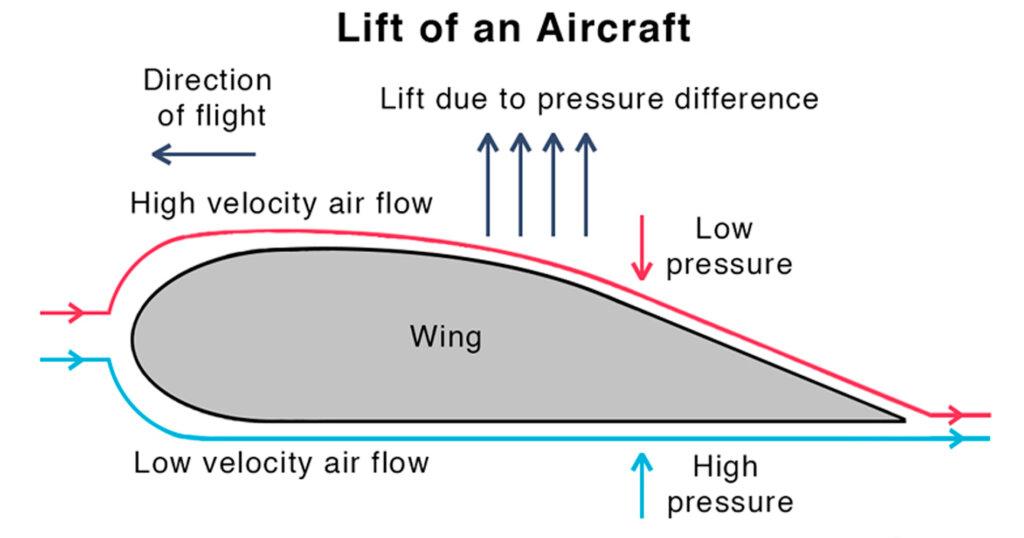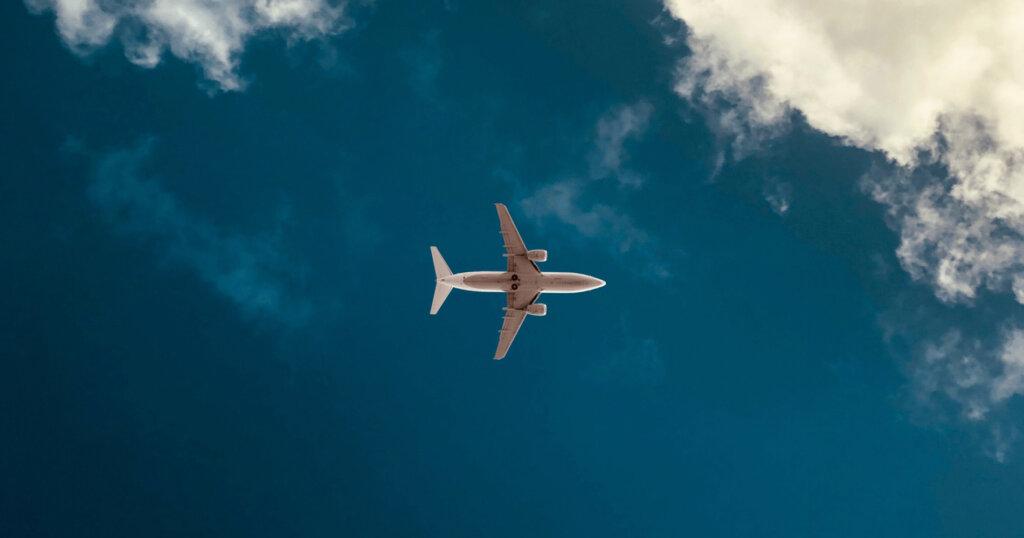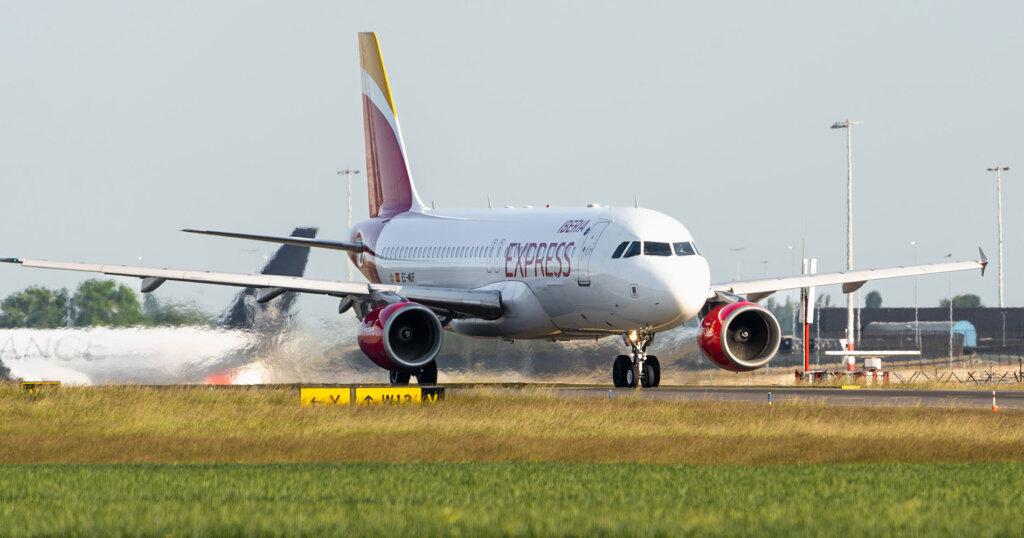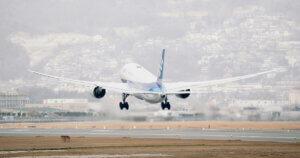
Code Blue
Code Blue in Flight Blog What is a Code Blue in aviation? Code Blue is the term used to refer to time-dependent health incidents, that is, those in which every
To see an airplane fly and wonder how is it possible that this enormous mass, which weighs tons, can be sustained in the air is something everybody experience sometime. Well, it is just basic aerodynamics principles taking place.
Physics has been always considered an essential science for understanding the complexity of the Universe. Combined with other fields, it allows a thorough observation of the object under study. This is how fluid mechanics, a branch of physics, together with the application of basic mechanics knowledge allows studying fluids both, still and in motion. In other words, it focuses on fluid movement. From here, Bernoulli’s theorem is built. The law by which aircrafts fly, also known as the Bernoulli principle after the Swiss scientist Daniel Bernoulli who developed it.
Daniel Bernoulli (1700-1782) was a Swiss mathematician, statistician, physicist and physician who excelled not only in pure mathematics but also in applied ones, mainly statistics and probability. He made important contributions in hydrodynamics and elasticity. In 1738 he published his work Hidrodynamica, in which he exposed what later was known as the Bernoulli Principle, which describes the behavior of a fluid moving along a closed conduit.
The Bernoulli Equation states that a speed increase on moving air or a flowing fluid is accompanied by a decrease in the pressure of said air or fluid. That is, at higher speed lower pressure (and viceversa) to maintain the same value.
One of the most important applications of this principle is the answer to why aircrafts fly as, for this to happen, it is necessary to apply the Bernoulli principle in the wings design.
The first thing we need to know when it comes to explain why planes fly are the forces acting upon them when they are in the air. These forces are four: two in opposite horizontal direction and two in vertical opposite direction. Thus, the air resistance is opposed to the impulse of the aircraft, driven forward by the engine action. On the other hand, the aircraft’s weight, which pulls it down, is opposed by the lifting force, which keeps the aircraft in the air.
This is where the wings and their particular design come into play. Its upper part, called extrados, is curved while the lower part, called intrados, is straight. So, the air that flows over the wing has a longer surface to travel along and gets acceleration due to aerodynamics, running at a higher speed than the air below. In this way, a pressure difference is created between the air above and below the wings generating a lifting force under them that facilitates the aircraft’s suspension in the air.

On the other hand, the wing design is rounded at the front and sharpened at the back. This causes that the air current traveling on the upper part at a higher speed, when it encounters the lower current, pushes down. As a result, and according to Newton’s Third Law of Motion which states that each force action has a force reaction of equal intensity acting in the opposite direction, an upward force is generated which helps keep the aircraft in the air.
A good knowledge of the earth’s atmosphere is essential to understand the behaviour of in flight aircrafts and to plan their routes more efficiently, avoiding turbulence and intense weather phenomena.
As we move away from the Earth’s surface, its atmosphere has different characteristics. So, it is divided into 5 different layers:
The layer in which the planes fly is the troposphere, the closest to Earth although, inside it, each type of plane uses a different altitude according to its needs. Generally, commercial aircrafts mantain a minimum altitude of 10,000 meters where the perfect conditions for their flight are given: less turbulence, fewer storms, fewer obstacles and an ideal atmospheric pressure to maintain optimal lift, which is why planes fly so high.

However, the maximum ceiling of these flights does not usually pass level 450 (about 12150m), flying in the so-called tropopausa while school flights as well as private flights in general always stay in the troposphere. Different case are the fighter aircrafts that can exceed 750 (more than 21000m), in the stratosphere.
On paper, the shortest route between two points is a straight line. However, since the Earth is a sphere the shortest distance between two points is an arc rather than a straight and constant course. This would be the main reason why planes do not fly in a straight line.
Commercial aircrafts generally fly on a line called the Great Circle, which is the shortest distance between any two points on Earth. The routes aircrafts use are the so-called “airways”. These air roads are planned to optimize all the aircraft’s resources and run perfectly controlled by each of the airspace controls they pass by to reach destination.
No, it is not true that planes do not fly over the oceans.
As we have already said, due to the curvature of the Earth, the shortest and fastest distance is not always the most direct. An example could be the route Madrid-Mexico which enters northern United States and then travels down to DF.
However, when planning a flight route there are many factors to consider such as weather conditions, traffic, geographic location of destination and, of course, ETOPS/ETOD regulations (meaning “Extended-range Twin-engine Operation Performance Standards” and “Extended Divertion Time Operations respectively) which regulates the standards every airline must comply with when flying with a two-engine aircraft more than 60 minutes from any airport.

Due to the higher profitability of these aircrafts, generated by lower fuel consumption, airlines began to request approval to perform flights exceeding the 60-minute limit on an alternative airport.
Thus, the aeronautical authorities issued a series of rules so that twin-engine aircrafts may cover routes longer than 60 minutes from an alternative airport, contemplating the following ranges of diversion times:
These rules also apply to three- and four-engine aircrafts flying more than 180 minutes from an airport and apply to flights over the oceans and over remote areas such as the Amazon, deserts, etc.
An ETOPS, EROPS, EDTO or LROPS flight (acronym used to refer to this type of flight by the different aeronautical authorities, regardless the aircraft’s engines number) must comply with a very strict set of rules to receive such certification.
Our pilot school works for the professional excellence of each student.
We are accompanied by instructors with more than 20 years of experience and state-of-the-art aircraft.
We offer:
Helicopter Pilot Courses
Aeroplane Pilot Courses
Drone Pilot Courses
Flying Experiences

Code Blue in Flight Blog What is a Code Blue in aviation? Code Blue is the term used to refer to time-dependent health incidents, that is, those in which every

Discover how this ground effect is generated in aircraft and how to control it on a flight if you are a pilot Learn how to avoid the well known balloon
You will be up to date with the news at World Aviation Group.